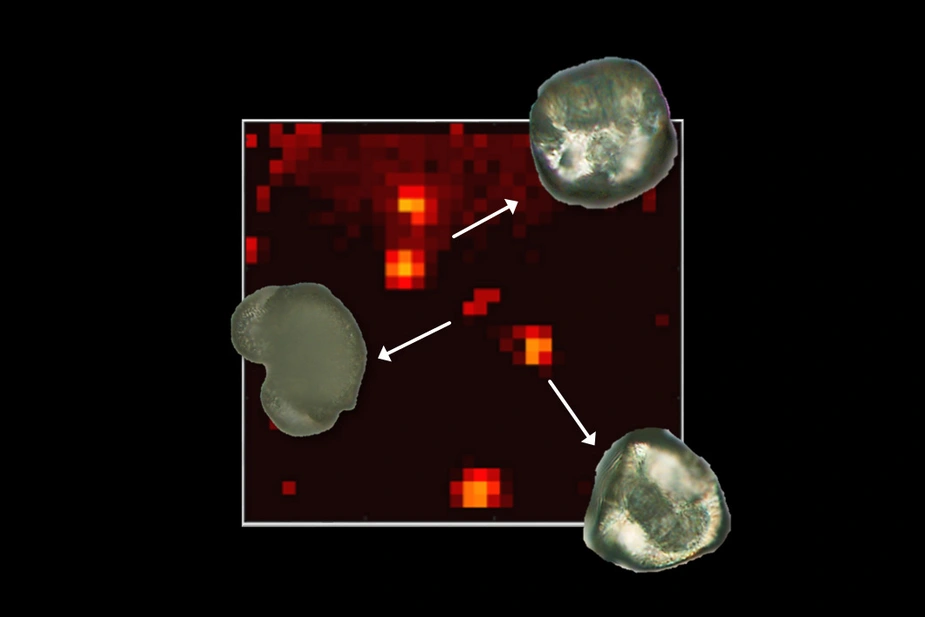More reliable method for pollen determination
BAM researchers clearly identify single pollen grains by mass spectrometry
Pollen represent one major cause for allergic diseases. Even today, their conventional identification is performed by time-consuming microscopic determination of their morphology, although alternative spectroscopic and spectrometric approaches have already been described. One of these methods is matrix-assisted laser desorption/ionization time of flight mass spectrometry (MALDI-TOF MS).
Are pollen detectable with MALDI-TOF MS? Is it possible to distinguish between different types of pollen with this method? Does this also work in a mixture consisting of different types of pollen?
Yes, pollen grains can be detected with MALDI-TOF MS. As any biological sample, pollen grains contain specific proteins, peptides and carbohydrates, that can be extracted during sample preparation from the grain surface and produce characteristic MS signal patterns. Sample preparation is based on the use of a simple conductive adhesive tape which improves both the fixation of the pollen and extraction of the analytes from it.
Yes, pollen grains can be differentiated by mass spectrometry. The distinction between different types of pollen is possible by comparing their respective spectral patterns. It is not necessary to know the structure of the chemical compounds that are represented by these signals. Very often the differences in the spectra of similar species are not visible by the naked eye. Therefore, multivariate statistics (principal component analysis) is used to differentiate between such patterns. In other words, differences (variances) in the data sets are selected and ‘weighted’.
Yes, different types of pollen in mixtures can be detected, identified and counted. For this purpose, the MALDI Imaging technique was applied. This technique is based on generating laterally resolved images in which each pixel (50 µm x 50 µm) represents one mass spectrum. The evaluation of such imaging data sets was again carried out with multivariate statistics. Various approaches were examined and evaluated. Finally, individual pollen grains of different species could be identified and assigned in a model system.
The presented approach could represent a new, more reliable method for pollen determination, which is based on scientific analysis instead of an optical assessment by an individuum.
Publication:
Multivariate analysis of MALDI imaging mass spectrometry data of mixtures of single pollen grains
Franziska Lauer, Sabrina Diehn, Stephan Seifert, Janina Kneipp, V. Sauerland, C. Barahona, Steffen Weidner
Journal of the American Society for Mass Spectrometry, 2018, Volume 29, Issue 11
- Multivariate analysis of MALDI imaging mass spectrometry data of mixtures of single pollen grains, Journal of the American Society for Mass Spectrometry, 2018
- PUBLICA: Multivariate analysis of MALDI imaging mass spectrometry data of mixtures of single pollen grains, Journal of the American Society for Mass Spectrometry, 2018
Further Information:
BAM Bundesanstalt für Materialforschung und -prüfung
Department Analytical Chemistry; Reference Materials, Division 1.3 Structure Analysis
Tel.: +49 30 8104-1139
Fax: +49 30 8104-1139
www.bam.de
